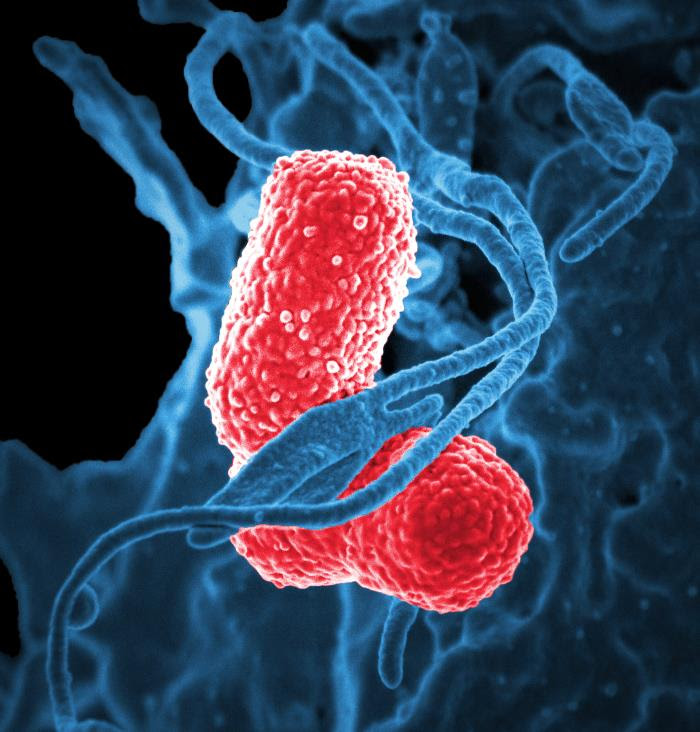 Centers for Disease Control
Centers for Disease Controland Prevention
PHIL Images From This Week
|
02/27/2015 08:00 AM EDT
This 1979 image depicted a Centers for Disease Control (CDC) facility
in Fort Collins, Colorado, which is the home of the CDC’s Division of Vector-Borne
Disease (DVBD).
|
|
02/26/2015 08:00 AM EDT
This illustration depicts a three-dimensional (3D) computer-generated
image of four multidrug-resistant Pseudomonas aeruginosa bacteria.
The artistic recreation was based upon scanning electron micrographic
imagery. Note the presence of numbers of thin, diaphanous fimbriae
emanating from the organisms’ cell wall, as well as a single, corkscrew-shaped
flagellum, which provides for the bacteria’s unipolar mode of motility.
|
|
02/25/2015 08:00 AM EDT
This image depicts Centers for Disease Control (CDC) microbiologist
Kitty Anderson holding up two Petri dish culture plates growing bacteria in the presence of discs containing various antibiotics. The isolate on the left plate is susceptible to the antibiotics on the discs, and is therefore, unable to grow adjacent to the discs. The plate on the right was inoculated with a Carbapenem-Resistant Enterobacteriaceae (CRE) bacterium that proved to be resistant to the antibiotics tested. |
|
02/24/2015 08:00 AM EDT
Produced by the National Institute of Allergy and Infectious Diseases
(NIAID), this digitally-colorized scanning electron micrograph (SEM)
depicts a blue-colored, human white blood cell (WBC) known
specifically as a neutrophil, interacting with two pink-colored, rod-shaped,
multidrug-resistant (MDR)Klebsiella pneumoniae bacteria, which are known
to cause severe hospital-acquired, nosocomial infections.
|
|
02/23/2015 08:00 AM EDT
This 2014 image depicts Centers for Disease Control (CDC)
microbiologist Johannetsy Avillan holding up an opened Petri dish culture plate,
demonstrating the results of a modified Hodge test, used to identify resistance in
bacteria known as Enterobacteriaceae. Bacteria that are resistant to carbapenems
(Carbapenem-Resistant Enterobacteriaceae (CRE)), which are considered
“last resort” antibiotics, produce a distinctive clover-leaf shaped growth pattern,
as seen in this case.
|
 14684
14684 16876
16876 0016802
0016802 0018170
0018170 0016804
0016804
댓글 없음:
댓글 쓰기